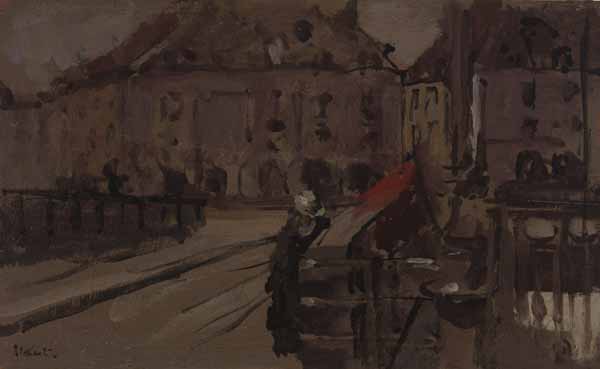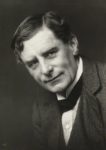
Walter Richard Sickert
British, 1860-1942
The Bridge, Dieppe, 1885 ca.
oil on panel
6 x 9 3/8 in.
SBMA, Gift of Mary and Will Richeson, Jr.
1986.93.28

Photo of Sickert by George Charles Beresford, half-plate glass negative, 1911
"Perhaps the importance that we must attach to the achievement of an artist or a group of artists may properly be measured by the answer to the following question: Have they so wrought that it will be impossible henceforth, for those who follow, ever again to act as if they had not existed?" - Walter Sickert
SBMA CURATORIAL LABELS
Sickert was the most European of British artists. He was born in Munich,the son of a Danish painter and Anglo-Irish mother.
As a young man he was studio assistant to James McNeil Whistler; ultimately, he was too independently minded to stay for long, but during the period he was entrusted with transporting the portrait of Whistler’s mother to Paris. For a time, particularly during the 1880s when he lived largely in the northern French fishing port of Dieppe, he adopted Whistler’s low-keyed palette.
- British Modernism from Whistler to WWII, 2016
